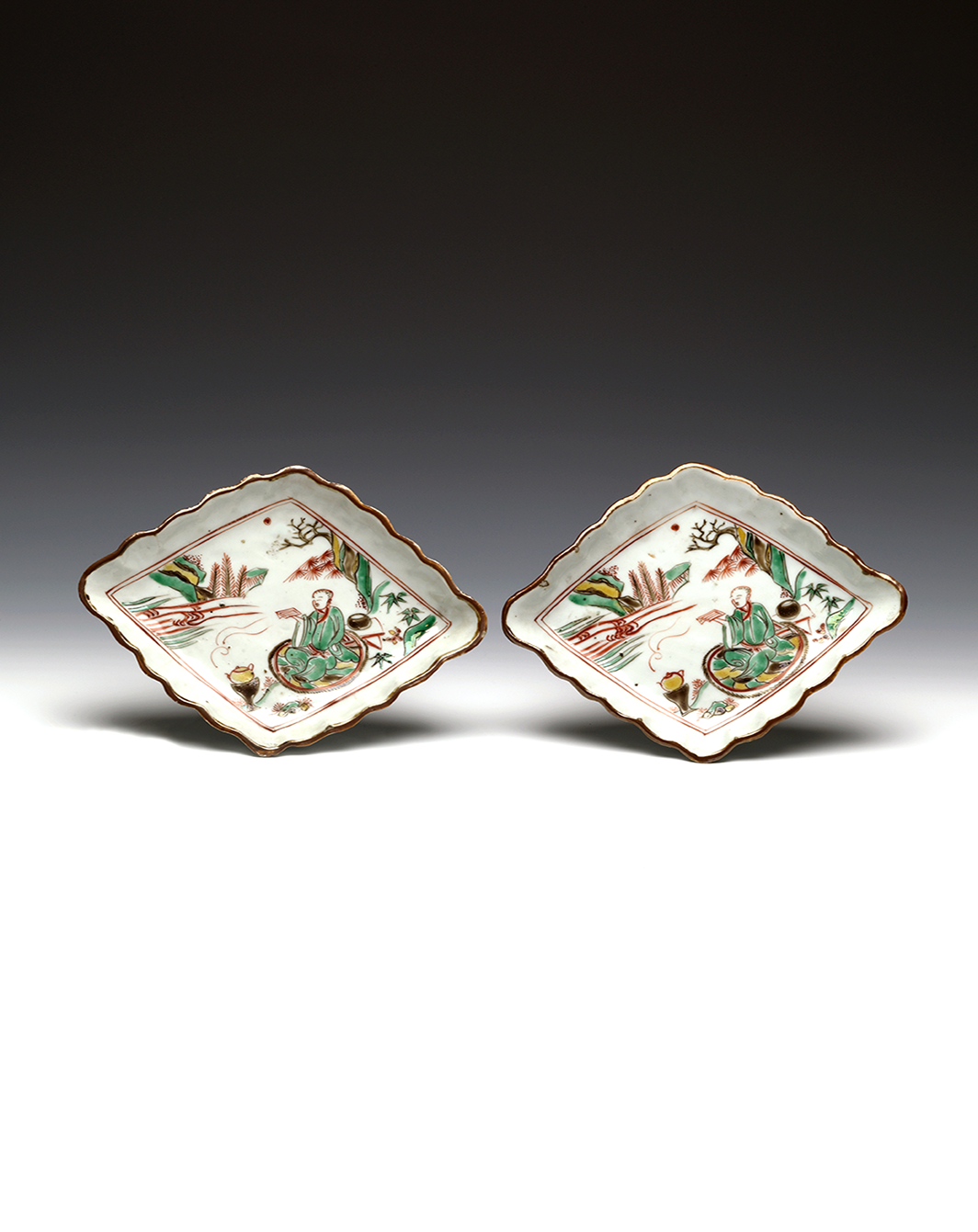Bowl
| Object Title | Pair of ko-akae plates |
| Origin | China |
| Date | Ming dynasty, Tianqi period, 1621–1627 |
| Material | Porcelain |
| Dimensions | width 18.5 cm |
| Collection | University Museum and Art Gallery, HKU |
| Accession No. | HKU.C.1978.0627 |
Painted in a wucai palette of red, green, brown and yellow overglaze enamels, the scenes on these plates show a Buddhist monk seated on the ground surrounded by tea utensils. The figure may be Kanaka Bharadvaja, a luohan (‘perfected being’, rakan in Japanese), who in Buddhist art is commonly depicted with a book and a fly whisk. Called ko-akae (‘old red wares’) in Japan, they were made for use in meals accompanying the Japanese tea ceremony. The plates feature characteristic surface flaws that tea practitioners found appealing, such as glaze bubbles and worn edges. Such wares were produced during a relatively brief period between the reigns of the Tianqi and Kangxi emperors (1662–1722). Other names for ko-akae include Tenkei akae, based on their prolific production during the reign of the Tianqi emperor (called Tenkei in Japanese), and Nankin akae, after the Japanese belief that they were decorated in Nanjing. They were rarely exported to Europe, where more highly finished and thinly bodied enamelled ceramics were preferred.
